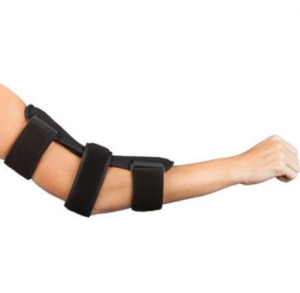Top Sleep Positions for 6 Common Conditions

When Can I Move Again?
February 9, 2020
Injury Mindset
March 2, 2020
Detrimental positions, postures, and activities are obstacles to healing. A significant variable that, when corrected, allows patients to heal more quickly is sleep posture. This article identifies six condition-specific sleep faults, and recommends clear-cut solutions by modifying the sleep routine.
The frequently overlooked problem — SLEEP Posture.
Musculoskeletal symptoms frequently surface at night. Sleep comprises one-third of our lives and should be a time during which our bodies recover and heal, it therefore deserves our attention. Improper sleeping postures may impede blood flow, directly compress tissue, or stretch injured structures, all of which affect the inflammatory process.
This is most problematic to those conditions that are caused by ischemia, i.e. tendinopathies and neuropathies. However, all healing and recovery requires an inflammatory process to build new tissue while simultaneously removing unwanted debris. Unfortunately, some sleep positions negatively affect this process, resulting in delayed healing, poor sleep, and prolonged symptoms.
How Does Sleep Position Affect Six Common Orthopedic Diagnoses?
1. Rotator Cuff Syndrome
Problem: “Many of us sleep with the arm in the overhead position of shoulder impingement, and this is a lifelong habit. Over time, this may be considered a “pathological sleep position.” The long-term result of chronically impinging the rotator cuff while asleep is to fall within the continuum of chronic tendinopathy. This could hypothetically be the chronic pain generator of nocturnal pain, the seemingly “asymptomatic shoulder” and may even explain “spontaneous” rotator cuff rupture.” (1)
Solution: Avoid sleeping on the affected side. Consider sleeping supine, or with the affected side up, placing a pillow between the arm and body for support and to minimize the effects of traction ischemia.
2. Neck Pain
Problem: Pathologic sleep positions may create or perpetuate cervical dysfunction. Neck pain is commonly associated with shoulder impingement from the side-lying sleeping posture. Similarly, pillow height can force static compression or stretch to the cervical structures, resulting in pain. Thin pillows aggravate degenerative conditions by
allowing excessive extension or lateral flexion of the spine. Static cervical flexion from thicker pillows can negatively affect disc lesions.
Solution: Choose a pillow that allows the neck to remain in a neutral position. Avoid excessively thick or thin pillows. Generally, feather or fiberfill pillows allow greater conformity than rigid foam.
3. Tennis Elbow
Problem: Sleep position is a possible aggravating factor that delays the healing of an acute injury and may result in chronic pain with lateral epicondylosis. (2) In particular, sleeping with the affected elbow beneath a pillow results in sustained compression to the wrist extensors.
Solution: Keeping the arm at the side results in a reduction of lateral elbow pain.
4. Carpal Tunnel Syndrome
Problem: Sleeping in a fetal position with sustained wrist flexion results in compressive ischemia to the median nerve.
Solution: A night splint can help prevent hyper-flexion of the wrist by reducing nerve compression. (3) Cock-up splints can prevent static flexion/compression during sleep, but patients who are susceptible to traction ischemia should avoid excessive extension. Also, avoid wearing an excessively tight brace, as this may be counterproductive to a compressive neuropathy.
5. Cubital Tunnel Syndrome
Problem: Sleeping in a fetal position with sustained elbow flexion results in traction ischemia to the ulnar nerve.
Solution: Limiting sustained elbow flexion will reduce ulnar nerve stretch. (4) Utilizing a brace that prevents elbow flexion beyond 45 degrees will limit stretch to the ulnar nerve. Pro Tip: consider the ulnar nerve floss for self-care to desensitize the nerve throughout the day.
6. Gluteal Tendinopathy
Problem: Gluteal tendon pain increases with positions, activities, and exercises that involve sustained or repetitive compressive loading—including sleeping. (5) Side-lying sleeping directly compresses the lateral hip resulting in ischemia and reduced ability to heal. Similarly, sleeping on the opposite side without a pillow under the knee will traction the TFL/ITB against the greater trochanter resulting in static compression.
Solution: Try to sleep on your back. If side lying is unavoidable, place a pillow between the knees to reduce torque on the upper hip. An eggshell mattress topper can limit compression of the underside hip. Avoid weighted blankets.
Resolving pain requires attention to detail. Changing a habit is difficult, but often necessary to promote tissue recovery. Patients are unable to control their sleeping position once asleep, so sometimes passive devices are required. On average, patients change positions every 30 minutes. So how they fall asleep, may not be how they wake up. Avoiding compression and stretch will limit delays in patient recovery.
Dr. James B.
The post Top Sleep Positions for 6 Common Conditions appeared first on Diversified Integrated Sports Clinic.
[ad_2]
Source link





